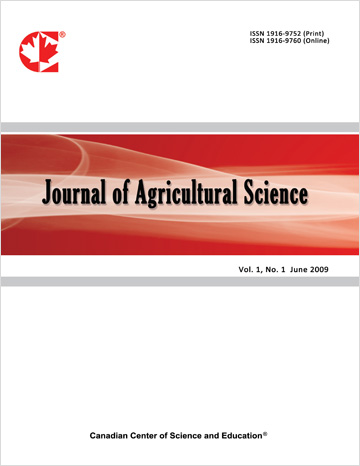Influence of Pulp, Sugar and Maltodextrin Addiction in the Formulation of Kiwi Jellies With Lemon Grass Tea
- Sâmela L. Barros
- Newton C. Santos
- Raphael L. J. Almeida
- Semirames do N. Silva
- Amanda P. S. Nascimento
- Renata D. Almeida
- Victor H. de A. Ribeiro
- Wilton P. Silva
- Josivanda P. Gomes
- Vírgínia M. de A. Silva
- Tamires S. Pereira
- Ângela M. Santiago
- Márcia R. Luiz
Abstract
The jellies constitute an important alternative for the processing of fruits, adding greater economic and nutritional value. The objective of this study was to evaluate the effects of different concentrations of pulp, sugar and maltodextrin on the physical-chemical and textural characteristics of kiwifruit jelly with lemon grass tea. Factorial design 23 was used with 3 replicates at the central point, resulting in 11 experiments with variation of sugar percentages (30, 40 and 50%), pulp (50, 60 and 70%) and maltodextrin (5, 10 and 15%). Water content, moisture content, total soluble solids (TSS), total titratable acidity (TTA), ashes, pH, reducing sugars, non-sugars were evaluated for the following physico-chemical parameters: reducers, total sugars, lipids and vitamin C. Regarding the texture profile, the following parameters were evaluated: hardness, cohesiveness, chewing, gummy and adhesiveness. It was found that among the analyzed variables, the ones that were considered as significant and/or predictive according to ANOVA and the F test were: (moisture, total solids, carbohydrates and vitamin C), through the graphs of the surfaces of responses observed that the percentage of pulp and maltodextrin used was proportional to the increase in moisture content, vitamin C, total solids and carbohydrates. The G2 experiment presented the lowest values of moisture and water activity, and higher carbohydrate contents, total solids and cohesiveness, in which it was formulated with the sugar concentration (-1) and pulp and maltodextrin (+1). The development of kiwi jelly with lemon grass tea is an excellent alternative for the use of the raw material, since it is a product with high nutritional value, stability during storage and potential for consumer acceptance.
- Full Text:
 PDF
PDF
- DOI:10.5539/jas.v11n15p125
Journal Metrics
- h-index: 67
- i10-index: 839
- WJCI (2023): 0.884
- WJCI Impact Factor (2023): 0.196
Index
- AGRICOLA
- AGRIS
- BASE (Bielefeld Academic Search Engine)
- Berkeley Library
- CAB Abstracts
- ChronosHub
- CiteSeerx
- CNKI Scholar
- Copyright Clearance Center
- CrossRef
- DESY Publication Database
- DTU Library
- e-Library
- EBSCOhost
- EconPapers
- Elektronische Zeitschriftenbibliothek (EZB)
- EuroPub Database
- Excellence in Research for Australia (ERA)
- Google Scholar
- Harvard Library
- IDEAS
- iDiscover
- Jisc Library Hub Discover
- JournalTOCs
- KindCongress
- LIVIVO (ZB MED)
- LOCKSS
- Max Planck Institutes
- Mendeley
- MIAR
- Mir@bel
- NLM Catalog PubMed
- Norwegian Centre for Research Data (NSD)
- Open J-Gate
- OUCI
- PKP Open Archives Harvester
- Polska Bibliografia Naukowa
- Qualis/CAPES
- RefSeek
- RePEc
- ROAD
- ScienceOpen
- Scilit
- SCiNiTO
- Semantic Scholar
- SHERPA/RoMEO
- Southwest-German Union Catalogue
- Standard Periodical Directory
- Stanford Libraries
- SUDOC
- Swisscovery
- Technische Informationsbibliothek (TIB)
- Trove
- UCR Library
- Ulrich's
- UniCat
- Universe Digital Library
- WorldCat
- WRLC Catalog
- Zeitschriften Daten Bank (ZDB)
Contact
- Anne BrownEditorial Assistant
- jas@ccsenet.org
